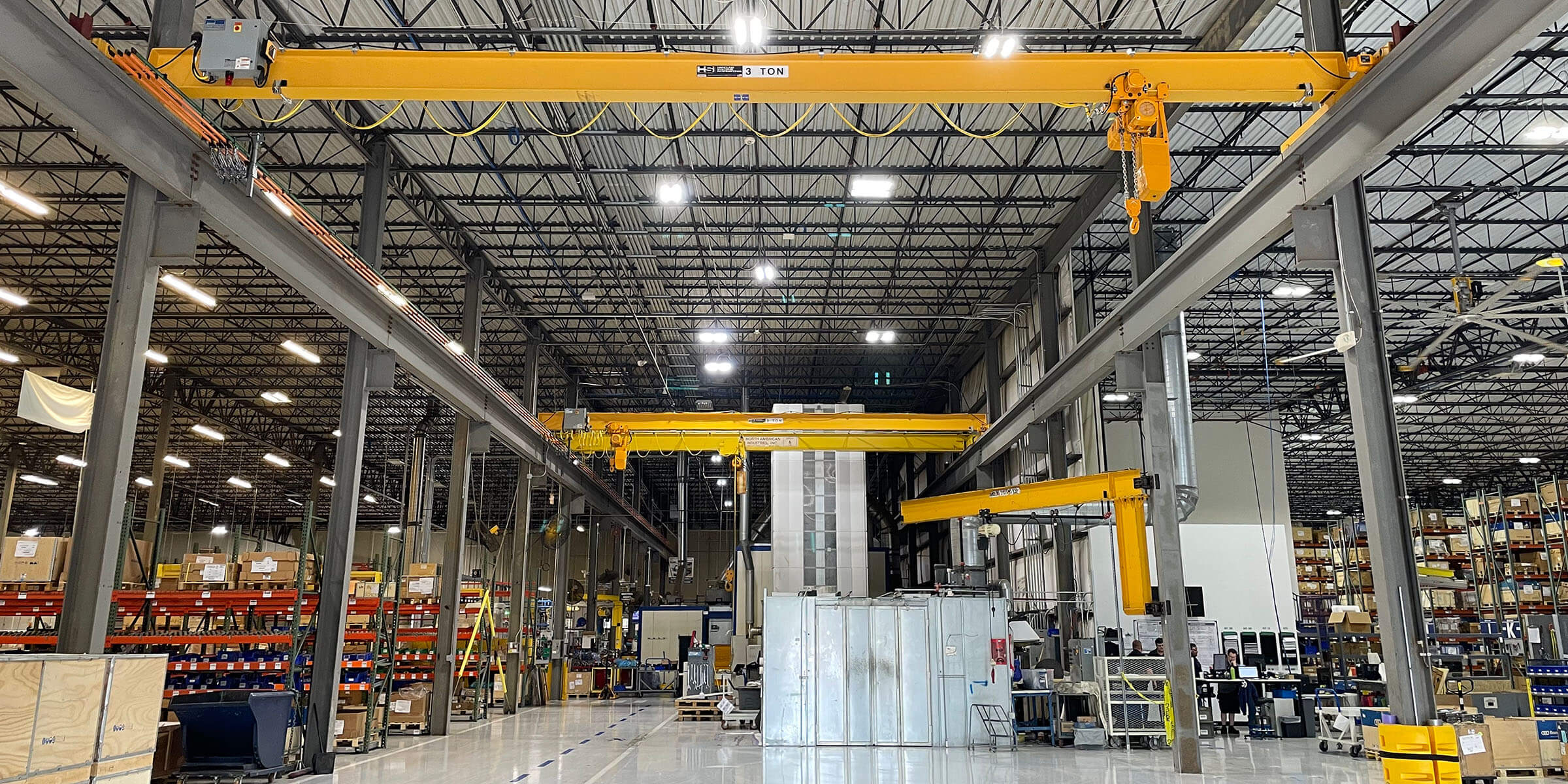Which Crane is Right for You?
Choosing the right overhead crane system depends on your process flow, space, and lifting demands. Here’s how they compare:
Bridge Cranes
A bridge crane is built into the structure of the building and relies on two parallel runways. These runways support a bridge (single or double configuration) which can move along the distance of the runways. Within the bridge, a trolley and hoist move along the bridge. This highly functional system can be designed to be able to carry a wide range of loads.
Gantry Cranes
A gantry crane is designed to travel on floor-mounted rails. These rails are parallel and can be embedded into the floor. Otherwise, a gantry crane is similar to a bridge crane, using a bridge, trolley and hoist to provide positioning flexibility. Load control and safety can be brought to work areas and loading zones with gantry cranes installed independent of the structure.
Jib Cranes
Jib cranes are unique from the others mentioned here, because they are typically mounted to stationary position, such as a column, pier or wall and setup to rotate and provide handling maneuverability up to 360°. This configuration provides an excellent solution for lifting and maneuvering in a tight radius. Jib cranes are a space-conscious, economical and flexible crane solution.
Monorail Cranes
A monorail crane typically relies on an existing building support (I-Beam) that is most often used in the ceiling structure. The monorail trolley is designed to run on the bottom flange of the I-beam. Monorail cranes can be versatile options for increasing process throughput and providing workspace flexibility.
Workstation Cranes
Workstation cranes are most often selected for light-duty, high-repetition solutions where lifting capacity needs are less, and flexibility and maneuverability are key. These portable units can be utilized in small work spaces and provide relief and increased productivity for task-oriented handling.















